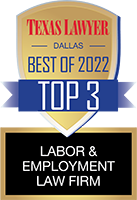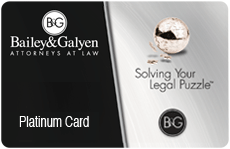What to Do When You’re Hurt on Commercial Premises
 In Texas, there is a duty to maintain commercial property in ways that minimize the risk of injury to persons legally visiting the property. That duty extends to anyone who (1) has access to or control of the property, (2) can reasonably be expected to monitor the premises for potentially unsafe conditions, and (3) can take reasonable steps to reduce the risk of injury. Those reasonable steps must either fix the problem, prevent access to the portion of the premises where the danger exists, or adequately warn visitors of the potential risks.
In Texas, there is a duty to maintain commercial property in ways that minimize the risk of injury to persons legally visiting the property. That duty extends to anyone who (1) has access to or control of the property, (2) can reasonably be expected to monitor the premises for potentially unsafe conditions, and (3) can take reasonable steps to reduce the risk of injury. Those reasonable steps must either fix the problem, prevent access to the portion of the premises where the danger exists, or adequately warn visitors of the potential risks.
What Must You Show to Recover for a Slip-and-Fall on Commercial Property in Texas?
Before you can file a claim for losses caused by an injury on commercial premises in Texas, you must show that you were on the property legally, as the duties of property owners and managers only apply to lawful visitors. Trespassers generally will not have a claim for premises liability.
The Difference Owed to Invitees and Licensees
Once you establish that you had the right to be on the property, you must show that the property owner or person in control of the premises failed to meet the standard of care for maintaining the property. The specific duties of the property owner vary, based on your “status” as a visitor. In Texas, you may be there as either an “invitee” or as a “licensee”:
- An invitee is a person who enters property with the owner’s knowledge and for the mutual benefit of both parties. In a commercial situation, this applies to customers who enter a store or other establishment to shop for or purchase goods or services. Because the visitor comes onto the property for the benefit of the owner, the owner owes the highest duty of care to that person and must take reasonable measures to protect the invitee from known or foreseeable risks that could be found through a reasonable inspection.
- A licensee is essentially a social guest, someone who comes on property with permission, but without commercial or business intent. To recover from a property owner as a licensee, you must show that (1) the owner knew or should have known of the risk, (2) you did not or could not reasonably know of the dangerous condition, and (3) the owner did not take reasonable steps to eliminate or minimize the risk.
Establishing Failure to Maintain the Property as the Cause of Your Injury
Finally, you must demonstrate a causal link between the property owner’s failure to maintain the property and your injury. That requires that you show two different types of cause—actual cause and proximate cause. Actual cause means you must prove that the accident (and your injury) would not have happened if the property owner had met his standard of care. Proximate cause means that the accident and injuries suffered were reasonably foreseeable as a result of the hazardous condition on the property.
What Should You Do in the Immediate Aftermath of an Injury on Commercial Property?
Take the following steps to protect your rights:
- Seek immediate medical attention,
- Notify store personnel as soon as possible,
- Identify potential witnesses and get their contact information,
- Take pictures of conditions on the premises, using the camera on your phone if necessary,
- Keep your clothing and shoes in case they become evidence,
- Ask medical personnel to document everything in writing and get copies of medical and accident reports, and
- Hire an experienced attorney.
Contact the Results-Oriented Personal Injury Lawyers at Bailey & Galyen
At the law office of Bailey & Galyen, we have a comprehensive knowledge of the Texas law governing personal injury on commercial property. We offer a free initial consultation to all prospective clients. To set up an appointment with an experienced personal injury attorney, contact us by e-mail or call our offices at 844-402-2992. Our phones are answered 24 hours a day, seven days a week.








